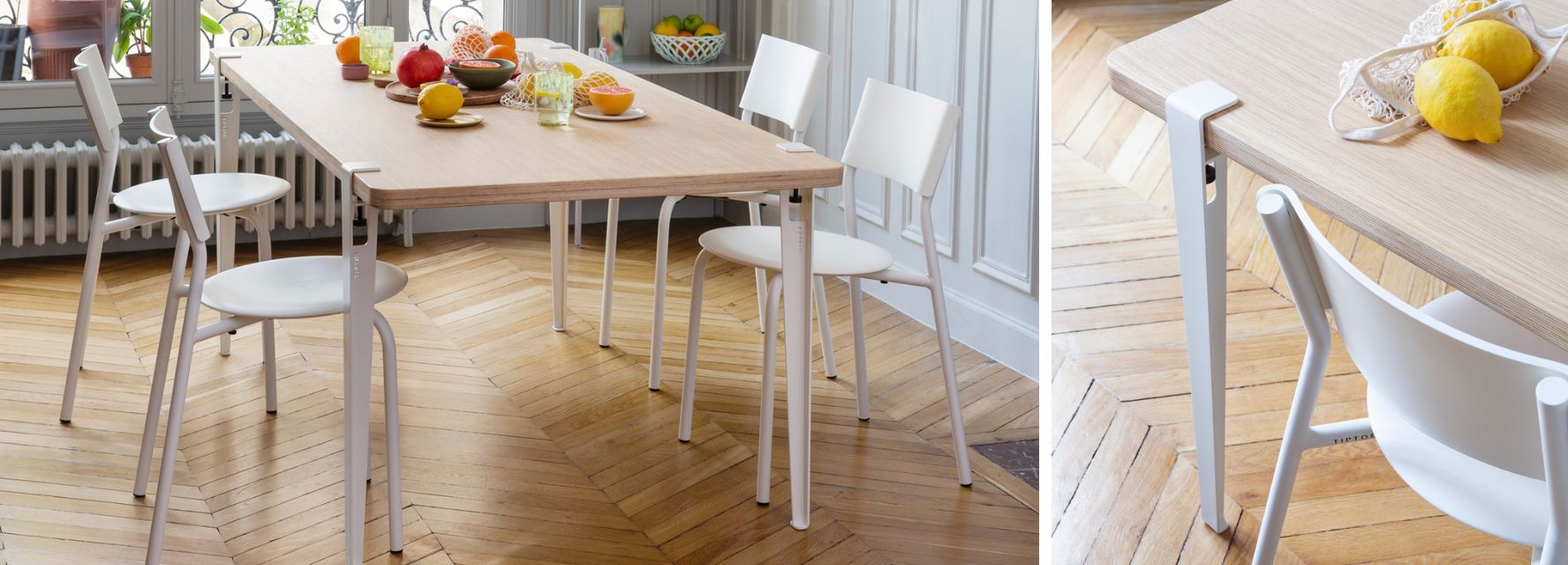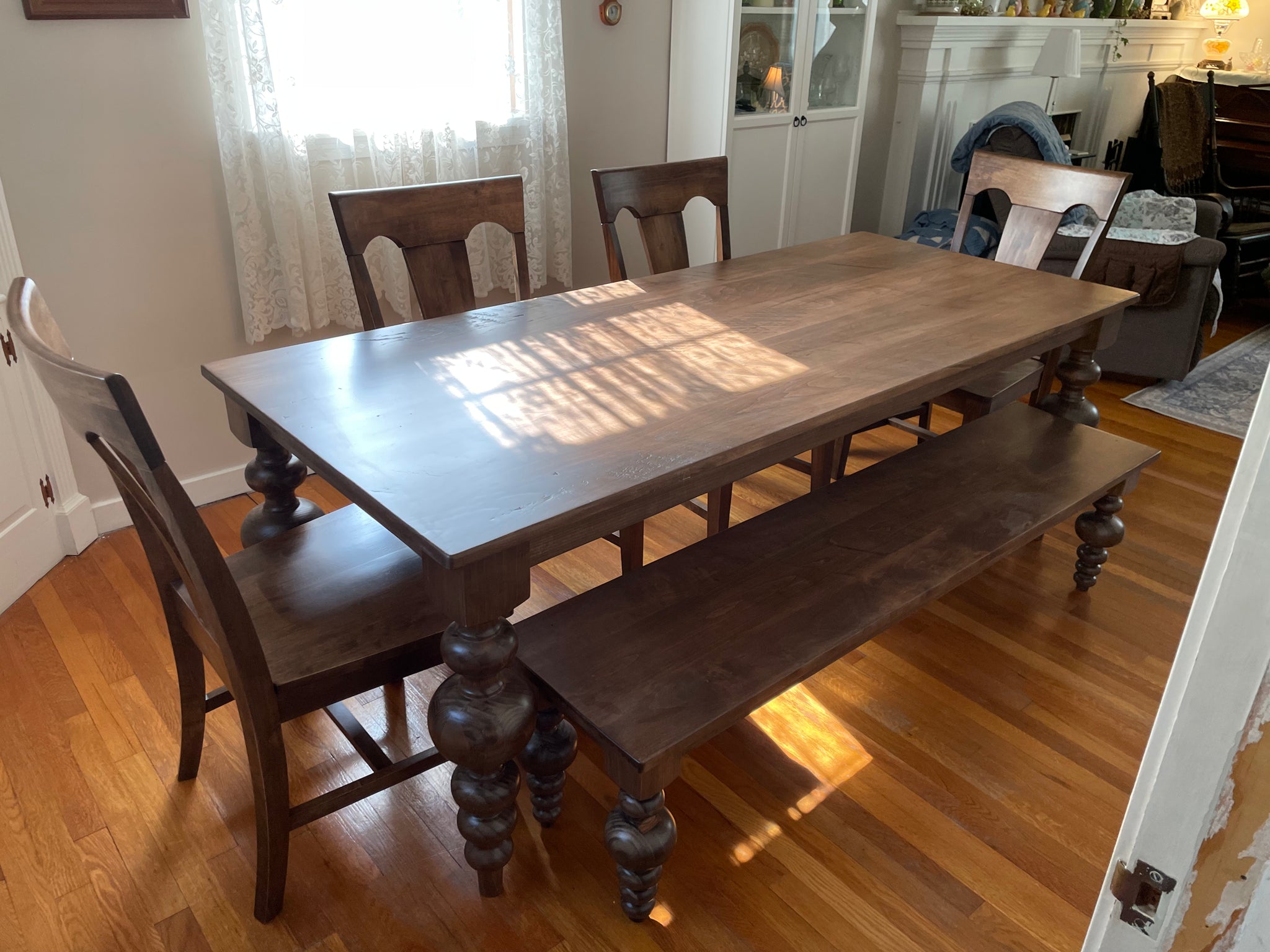Why Dining Room Table Legs Are Crucial for Your Table’s Stability
Why Dining Room Table Legs Are Crucial for Your Table’s Stability
Blog Article
From Conventional to Modern: Find the Ideal Dining Room Table Legs for Your Design
While classic designs such as cabriole and turned legs stimulate a feeling of ageless sophistication, modern designs like barrette and geometric options present an opportunity for striking aesthetic passion. As you take into consideration these components, the question continues to be: exactly how can you flawlessly incorporate these diverse leg styles to develop a harmonious eating experience?
Comprehending Table Leg Styles
The range of dining space table leg styles can dramatically influence both the aesthetics and performance of the area. Each leg design contributes one-of-a-kind aesthetic components and sensible attributes, dealing with varied design choices and usage demands. Comprehending these designs is crucial for selecting the best table that lines up with your general interior decoration vision.
As an example, tapered legs offer a tidy, timeless look that can improve a space's style, while pedestal bases give stability and take full advantage of legroom, making them perfect for smaller areas. Hairpin legs, a trademark of mid-century modern style, present a commercial panache, enabling a ventilated, open feeling. Likewise, trestle legs stimulate rustic charm, giving durable assistance and a feeling of timelessness.
In addition, the selection of materials plays a significant duty. Wooden legs can bring heat and structure, whereas metal choices commonly convey a streamlined, modern ambiance. Eventually, recognizing table leg designs is vital for producing a cohesive eating area that mirrors personal design while making certain usefulness and comfort. By thoughtfully thinking about these aspects, you can boost both the aesthetic and useful appeal of your dining area.
Conventional Table Leg Options
When selecting dining-room table legs, standard choices commonly symbolize classic style and workmanship. These layouts mirror an abundant heritage and a dedication to top quality, making them perfect for those that value traditional aesthetics.
One of one of the most famous typical leg designs is the cabriole leg, identified by its graceful bent shape. This design typically includes decorative makings and is most frequently located in Queen Anne and Chippendale furnishings. An additional preferred option is the transformed leg, which flaunts a series of smooth, rounded forms that offer a timeless appearance while maintaining security.
Additionally, the straight leg, while easy, provides a basic and tough structure that can mix perfectly with a range of tabletop styles. For those attracted to ornate describing, claw-and-ball feet legs evoke a feeling of splendour and can work as a magnificent centerpiece in any type of dining space.
Last but not least, stand bases, although not strictly legs, provide a different conventional option that enables ample legroom and can be perfectly sculpted. Each of these typical leg designs adds to the total ambiance of a dining space, marrying feature with aesthetic allure.

Modern Table Leg Designs
Modern table leg designs provide a varied variety of styles that emphasize ingenious products and tidy lines. These designs often prioritize functionality while functioning as striking focal points within a dining space. Minimalist aesthetics prevail, with legs crafted from products such as metal, glass, and crafted wood, which add to a contemporary and airy feeling.
One preferred style is the hairpin leg, characterized by its slender, conical framework that offers stability without frustrating the tabletop (dining room table legs). This design is often found in mid-century modern furniture and can easily complement numerous table shapes. An additional trend is the usage of geometric forms, where legs might take on asymmetrical or angular types, including aesthetic rate of interest and a touch of virtuosity

Blending Designs for Special Areas
Frequently, house owners seek to develop distinct eating areas that show their individual design by blending different design components. This technique allows for the consolidation of diverse appearances, causing an unified yet distinctive environment. As an example, combining a rustic wooden table with streamlined, modern metal legs can develop an appealing comparison that raises the area's total allure.
In addition, incorporating vintage table legs with modern table tops can evoke a feeling of history while preserving a modern sensibility. Such mixes not just display specific taste yet also urge creativity, permitting property owners to curate a space that really feels both personal and welcoming.
Color plays an important duty in this mixing procedure; selecting table legs that enhance or comparison with the existing color system can boost visual interest. For instance, whitewashed legs can soften the daring of a dark table surface area, producing a balanced aesthetic.
Tips for Choosing the Right Legs
Selecting the right table legs is necessary for attaining both functionality and visual appeal in your eating area. Begin by thinking about the total style of your area. Conventional setups gain from legs that include intricate makings or turned designs, while modern spaces may call for sleek, minimal styles.
Next, evaluate the elevation and security of the legs. dining room table legs. Typical dining tables vary between 28 to 30 inches in elevation, so guarantee the legs match this measurement for convenience. In addition, durable materials, such as wood or steel, can improve stability and long life
Examine the leg shape also-- alternatives consist of directly, tapered, or stand layouts. Straight legs supply a traditional look, while tapered legs can add a touch of style. Pedestal bases supply enough legroom and are suitable for smaller sized spaces.
Verdict
In summary, picking the excellent eating space table legs needs careful consideration of both modern and typical designs. By balancing leg design, elevation, and product with the general décor, a natural and welcoming environment can be achieved.
The variety of eating area table leg click over here styles can significantly influence both the aesthetics and functionality of the space. Eventually, comprehending table leg designs is essential for developing a natural eating area that shows individual style while making sure functionality and convenience.One of the most legendary standard leg designs is the cabriole leg, identified by its graceful rounded shape. Straight legs supply a traditional appearance, while conical legs can add a touch of sophistication.In recap, picking the ideal eating space table legs requires careful consideration of both typical and modern designs.
Report this page